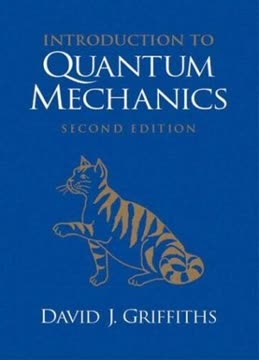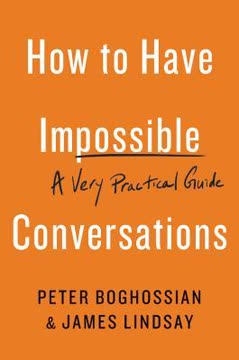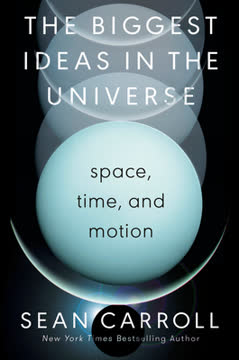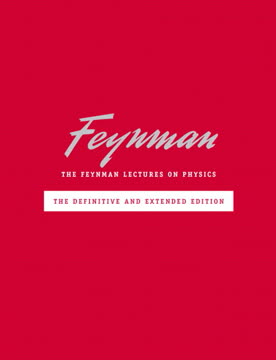Viktiga slutsatser
1. Behärska grunderna i matematik för fysik
"Det första du måste lära dig är matematiken. Och det innebär först och främst kalkyl. Och i kalkyl, differentiering."
Kalkyl är oumbärlig. Differentiering och integration är hörnstenarna i fysikberäkningar. Öva dessa operationer tills de blir en andra natur, eftersom du kommer att använda dem ständigt vid problemlösning.
Algebra är lika viktig. Se till att du kan manipulera algebraiska uttryck utan ansträngning. Denna färdighet är avgörande för att förenkla komplexa ekvationer och härleda relationer mellan fysiska storheter.
Memorering har sina begränsningar. Även om det är viktigt att känna till grundläggande formler, är det mer värdefullt att förstå de underliggande principerna. Fokusera på att utveckla förmågan att härleda ekvationer och relationer från grundläggande koncept.
2. Förstå vektorer och deras operationer på djupet
"En vektor är som en knuff som har en viss riktning, eller en hastighet som har en viss riktning, eller en rörelse som har en viss riktning—och den representeras på ett papper av en pil i riktningen av saken."
Vektorer är grundläggande. De representerar storheter med både storlek och riktning, såsom kraft, hastighet och acceleration. Att förstå vektoroperationer är avgörande för att lösa fysikproblem.
Viktiga vektoroperationer:
- Addition och subtraktion
- Skalärprodukt (punktprodukt)
- Vektorprodukt (korsprodukt)
- Projektion på axlar
Visualisera vektorproblem. Utveckla förmågan att representera vektorproblem grafiskt. Denna färdighet hjälper dig att förstå den fysiska situationen och vägleda din problemlösningsmetod.
3. Tillämpa fysikaliska lagar för att lösa verkliga problem
"De fysikaliska lagarna kan sammanfattas av några ekvationer, som jag kommer att skriva ner här."
Centrala fysikaliska lagar:
- F = dp/dt (Kraft är lika med förändringshastigheten av rörelsemängd)
- Bevarande av rörelsemängd
- Bevarande av energi
- F = ma (för icke-relativistiska fall)
Tillämpa lagar kontextuellt. Känn igen vilka lagar som är tillämpliga på ett givet problem. Ofta måste flera lagar kombineras för att lösa komplexa situationer.
Förstå approximationer. I många verkliga scenarier är förenklande antaganden nödvändiga. Lär dig när och hur du gör dessa approximationer utan att betydligt påverka lösningens noggrannhet.
4. Förstå principerna för rotationsdynamik och gyroskop
"Om du har en massa hävstänger som rör en massa vikter, kan du göra detta: när du driver saken framåt, och alla vikter börjar röra sig på grund av alla hävstänger, gör du en viss mängd arbete, W."
Rotationsrörelse är komplex. Att förstå sambandet mellan vinkelmoment, vinkelhastighet och vridmoment är avgörande för att analysera roterande system.
Gyroskop demonstrerar viktiga principer:
- Bevarande av vinkelmoment
- Precession
- Nutation
Användningarna är mångsidiga. Gyroskopiska principer används i navigationssystem, stabiliseringsanordningar och till och med för att förstå astronomiska fenomen.
5. Utforska tillämpningarna av tröghetsnavigeringssystem
"De allra bästa har en drift på högst 1/100-dels grad per timme."
Tröghetsnavigering är exakt. Moderna system kan bibehålla otroligt noggranna orienteringar över långa perioder, vilket möjliggör navigering utan externa referenser.
Viktiga komponenter:
- Gyroskop för att bibehålla orientering
- Accelerometrar för att mäta förändringar i hastighet
- Integrerande kretsar för att beräkna position
Kontinuerlig förbättring. Utvecklingen av tröghetsnavigeringssystem visar på ingenjörskonstens iterativa natur, som ständigt pressar gränserna för precision och tillförlitlighet.
6. Erkänn vikten av vinkelmoment i astronomi och kvantmekanik
"Vinkelmoment är en central funktion i analyserna av kvantmekanik, och det är faktiskt en av huvudorsakerna till att gå så långt in i mekaniken—för att kunna förstå fenomenen i atomer."
Astronomiska implikationer. Vinkelmoment spelar en avgörande roll i förståelsen av bildandet och beteendet hos himlakroppar, från planeter till galaxer.
Kvantmekaniska kopplingar. I kvantvärlden är vinkelmoment kvantiserat, vilket leder till diskreta energinivåer i atomer och molekyler.
Tvärvetenskapligt koncept. Principerna för vinkelmoment sträcker sig över klassisk mekanik, astronomi och kvantfysik, vilket visar på de fysiska teoriernas sammanlänkning.
7. Utveckla problemlösningsförmåga genom övning och intuition
"Problemet med hur man härleder nya saker från gamla, och hur man löser problem, är verkligen mycket svårt att lära ut, och jag vet egentligen inte hur man gör det."
Övning är avgörande. Lös en mängd olika problem för att utveckla dina problemlösningsförmågor. Börja med enklare problem och öka gradvis komplexiteten.
Utveckla fysisk intuition. Försök att förstå den fysiska betydelsen bakom ekvationer och formler. Visualisera problem och tänk på förväntade resultat innan du dyker in i beräkningar.
Flera angreppssätt. Lär dig att tackla problem från olika vinklar. Ofta finns det flera giltiga sätt att lösa ett fysikproblem, var och en erbjuder unika insikter.
Lär av misstag. Analysera felaktiga lösningar för att förstå var du gick fel. Denna process är ofta mer lärorik än att få rätt svar på första försöket.
Senast uppdaterad:
FAQ
What's "Tips on Physics" by Richard P. Feynman about?
- Supplement to Lectures: "Tips on Physics" is a problem-solving supplement to "The Feynman Lectures on Physics," designed to enhance understanding through practical exercises and insights.
- Focus on Problem-Solving: It emphasizes problem-solving techniques and provides additional exercises to help students apply the concepts learned in the lectures.
- Interviews and Memoirs: The book includes interviews with Feynman and his colleagues, offering personal insights into the creation of the lectures and Feynman's teaching philosophy.
- Historical Context: It provides historical context and anecdotes about the development of the lectures and the educational environment at Caltech.
Why should I read "Tips on Physics" by Richard P. Feynman?
- Enhance Understanding: It offers a deeper understanding of physics concepts through practical exercises and problem-solving strategies.
- Learn from a Master: Gain insights from one of the most brilliant physicists and educators, Richard Feynman, known for his unique teaching style.
- Supplementary Material: It serves as a valuable supplement to "The Feynman Lectures on Physics," providing additional context and exercises.
- Inspiration and Motivation: The book includes motivational stories and advice for students, helping them navigate the challenges of learning physics.
What are the key takeaways of "Tips on Physics"?
- Problem-Solving Techniques: The book emphasizes the importance of developing strong problem-solving skills in physics.
- Understanding Over Memorization: Feynman advocates for understanding the interrelationships of nature rather than rote memorization of formulas.
- Practical Applications: It highlights the practical applications of physics concepts in real-world scenarios, such as inertial guidance systems.
- Continuous Learning: Encourages students to explore and understand physics through examples and exercises, fostering a lifelong learning mindset.
What are the best quotes from "Tips on Physics" and what do they mean?
- "It is impossible to teach satisfactorily." This quote reflects Feynman's belief that teaching is a complex and evolving challenge, emphasizing the need for continuous improvement in educational methods.
- "The joy of learning physics, simply for the pleasure of it, became my highest priority." This quote from Michael A. Gottlieb highlights the intrinsic motivation and passion for learning that Feynman inspired in his students.
- "You have to have a certain feeling for the real situation!" Feynman stresses the importance of intuition and understanding the physical reality behind mathematical equations.
- "The real utility of physicists...is not to talk about what’s already known, but to do something new." This quote underscores the value of innovation and discovery in the field of physics.
How does "Tips on Physics" enhance problem-solving skills?
- Practical Exercises: The book provides a variety of exercises that challenge students to apply physics concepts in different scenarios.
- Step-by-Step Solutions: It offers detailed solutions and explanations, helping students understand the reasoning behind each step.
- Diverse Problems: The exercises cover a wide range of topics, from basic mechanics to advanced concepts, ensuring comprehensive skill development.
- Encouragement of Intuition: Feynman encourages students to develop intuition and a deeper understanding of the physical world, beyond just solving equations.
What is the significance of the interviews included in "Tips on Physics"?
- Personal Insights: The interviews provide personal insights into Feynman's teaching philosophy and the development of the lectures.
- Historical Context: They offer historical context about the educational environment at Caltech and the challenges faced in creating the lectures.
- Collaborative Effort: Highlight the collaborative effort between Feynman, Leighton, and Sands in producing the lectures and supplementary materials.
- Inspirational Stories: The interviews include inspirational stories and anecdotes that motivate students and educators alike.
How does "Tips on Physics" address the challenges of learning physics?
- Emotional Challenges: Feynman acknowledges the emotional challenges students face, such as feeling below average, and offers advice on overcoming them.
- Practical Advice: Provides practical advice on how to approach learning physics, emphasizing understanding and intuition over memorization.
- Encouragement of Exploration: Encourages students to explore topics that interest them, fostering a sense of curiosity and engagement.
- Supportive Environment: Highlights the importance of a supportive educational environment and the role of collaboration among students and educators.
What are some practical applications of physics discussed in "Tips on Physics"?
- Inertial Guidance Systems: The book explains the principles behind inertial guidance systems, used in submarines and aircraft.
- Gyroscopes: Discusses the use of gyroscopes in navigation and stabilization, illustrating the practical application of rotational dynamics.
- Rocket Propulsion: Covers the fundamental equations of rocket propulsion and the challenges of designing efficient propulsion systems.
- Satellite Motion: Explores the physics of satellite motion and the calculations involved in determining escape velocity and orbital dynamics.
How does "Tips on Physics" relate to "The Feynman Lectures on Physics"?
- Supplementary Material: It serves as a supplementary material to the lectures, providing additional exercises and insights.
- Problem-Solving Focus: While the lectures cover theoretical concepts, "Tips on Physics" focuses on practical problem-solving techniques.
- Historical Context: Offers historical context and personal anecdotes related to the creation of the lectures.
- Enhanced Understanding: Aims to enhance students' understanding of the lectures by providing practical applications and exercises.
What teaching principles does Richard P. Feynman emphasize in "Tips on Physics"?
- Understanding Over Memorization: Feynman emphasizes the importance of understanding concepts rather than memorizing formulas.
- Intuition and Exploration: Encourages students to develop intuition and explore topics that interest them.
- Practical Problem-Solving: Focuses on practical problem-solving techniques and real-world applications of physics concepts.
- Continuous Improvement: Advocates for continuous improvement in teaching methods and adapting to students' needs.
How does "Tips on Physics" address the emotional challenges faced by students?
- Acknowledgment of Challenges: Feynman acknowledges the emotional challenges students face, such as feeling below average.
- Rational Perspective: Offers a rational perspective on these challenges, emphasizing that being below average at Caltech is still exceptional.
- Encouragement and Support: Provides encouragement and support, advising students to focus on their strengths and interests.
- Long-Term Perspective: Emphasizes the long-term benefits of persevering through challenges and the value of a Caltech education.
What are some advanced topics covered in "Tips on Physics"?
- Rotational Dynamics: The book delves into advanced topics in rotational dynamics, including gyroscopes and inertial guidance systems.
- Relativistic Physics: Covers concepts related to relativistic energy and momentum, providing a deeper understanding of modern physics.
- Quantum Mechanics: Discusses the role of angular momentum in quantum mechanics and its significance in atomic physics.
- Astronomical Applications: Explores the application of physics concepts in astronomy, such as the motion of satellites and the formation of nebulae.
Recensioner
Feynmans tips om fysik får blandade recensioner, med ett genomsnittligt betyg på 4,23/5. Många läsare uppskattar Feynmans unika angreppssätt och insikter, och finner boken hjälpsam för att förstå fysikens koncept. Vissa berömmer den historiska kontexten och de problemlösningstekniker som presenteras. Å andra sidan kritiserar andra den missvisande titeln och de begränsade praktiska tipsen. Boken ses som en följeslagare till Feynmans föreläsningar snarare än en fristående guide. Läsarna värdesätter Feynmans undervisningsstil och humor, men vissa tycker att innehållet är för grundläggande eller förvirrande för nybörjare.
Similar Books



















